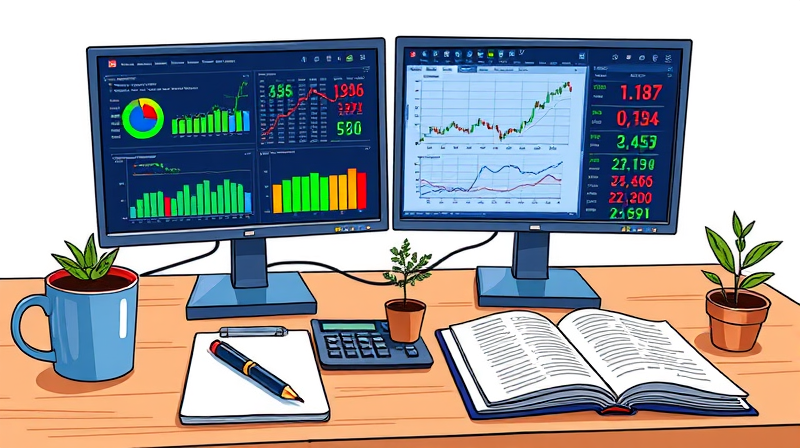
Disruptive technologies are reshaping industries and creating unprecedented opportunities for investors willing to embrace change. By understanding emerging trends, macroeconomic catalysts, and strategic pathways, you can position your portfolio to capture outsized gains.
In 2025, global governments are boosting research and development spending, providing government incentives fueling innovation across AI, semiconductors, green energy, and beyond. Central banks maintain accommodative policies to sustain growth, but market volatility underscores the need for diversification.
With geopolitical tensions and supply-chain disruptions on the rise, a balanced approach becomes paramount. Investors should monitor policy shifts and fiscal stimuli as early signals of capital inflows into key sectors.
Artificial intelligence sits at the heart of the disruption narrative. Five major AI hyperscalers plan to invest over $1 trillion in capex from 2024 to 2027, driving demand for hardware, energy, and data infrastructure. Nvidia’s revenues soared from $4 billion in 2014 to an estimated $61 billion in 2024—an exemplar of AI’s compounding effect.
The real opportunity lies in the “picks-and-shovels” players: companies supplying energy-efficient chips, data-storage solutions, and cloud infrastructure. By targeting these enablers, investors can benefit regardless of which AI platform dominates.
Chips are the backbone of every digital breakthrough. With edge computing markets forecast to expand rapidly by 2027, semiconductor designers and advanced foundries stand to gain significantly. Investors may consider leading manufacturers alongside niche specialists pioneering novel materials and processes.
Edge nodes will increasingly handle data locally, reducing latency for applications like autonomous vehicles and industrial automation. This trend highlights the importance of targeting both centralized and distributed hardware plays.
Cloud platforms continue to power enterprise transformation, fueling demand for scalable SaaS and serverless architectures. Simultaneously, 5G rollout accelerates IoT deployments, smart-city initiatives, and low-latency applications.
Quantum computing remains nascent but poised for long-term breakthroughs in pharmaceuticals, cryptography, and materials science. While only a handful of firms like IBM, Google, and Rigetti lead the charge, adding small exposure can pay dividends when commercial inflection arrives in 3–5 years.
A measured allocation to venture funds or specialized ETFs can provide diversified access without overcommitting to a single technology.
As digital penetration deepens, cyber threats multiply. Organizations will allocate record budgets to safeguard data, networks, and critical infrastructure. Investing in sophisticated cybersecurity solutions ensures portfolios benefit from ever-growing defense budgets.
Look for firms with strong track records in threat intelligence, zero-trust architectures, and AI-driven security analytics.
Climate imperatives and cost-optimization are driving rapid adoption of renewable energy, electric vehicles, and energy-efficiency technologies. Advanced nuclear designs, such as small modular reactors, promise stable baseload power, while osmotic power and structural battery composites chart new frontiers.
Green technology ETFs and thematic funds offer immediate exposure, while direct stakes in project developers can yield higher returns for patient capital.
Genomic medicine and bioengineering are transforming healthcare diagnostics, drug discovery, and agriculture. Next-generation platforms that harness data analytics and gene editing technologies stand on the cusp of commercialization.
Consider diversifying between established pharmaceutical giants pursuing digital pathways and agile biotech startups innovating at the molecular level.
Satellite internet, reusable rockets, and space-based manufacturing are creating nascent markets. Private firms are securing contracts with national agencies, opening avenues for long-term growth. A small allocation to dedicated space technology funds can capture upside as this sector matures.
A diversified strategy across enablers and adopters mitigates concentration risk. Core elements include:
Regularly rebalance to align with shifting macro conditions and technological milestones.
Disruptive cycles can be turbulent. Capital-intensive projects face cost overruns, while regulatory headwinds may slow adoption. No past performance guarantees future returns, and megacap monopolies may dominate for years before challengers emerge.
Maintaining liquidity buffers and setting stop-loss thresholds helps manage drawdowns. Diligent due diligence and scenario planning are non-negotiable for sustained success.
Technological convergence—AI with new materials, bio-digital interfaces, integrated energy systems—will spawn novel business models. Investors who combine long-term vision with portfolio agility stand to capture the most significant returns.
As these disruptive technologies approach commercial inflection points, the time to act is now. By harnessing the insights outlined above, you can craft a resilient, opportunity-driven portfolio that profits from the innovation shaping our world.
References













